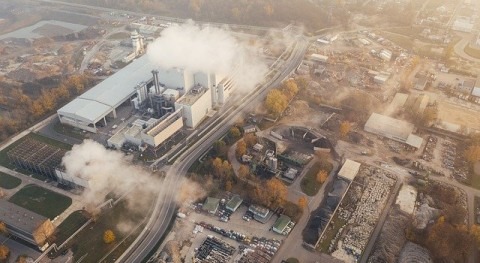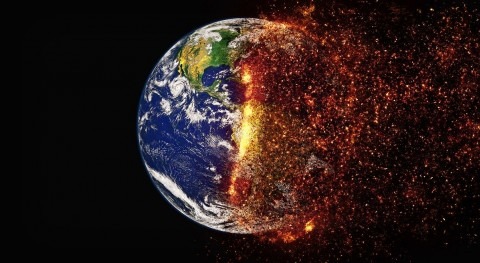What is precipitation?
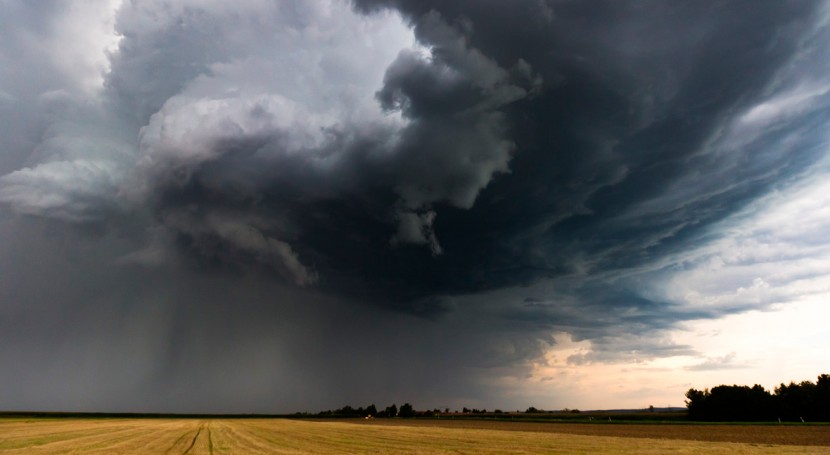
Precipitation is an important part of the water cycle, bringing fresh water to the surface of the Earth, and thus supporting life in our planet.
1 . Precipitation
In meteorology, precipitation refers to water that is in a liquid (rain) or solid state (snow or hail) and falls down to the Earth's surface.
2 . How precipitation forms
For precipitation to be formed, clouds have to first form as water vapour in the air condenses into droplets of water. It can happen in three different ways, leading to different types of precipitation.
3 . Types of precipitation
There are three types of precipitation, depending on how they are formed:
- Convective precipitation: it occurs in conditions of atmospheric instability, when warm, moist air rises by convection and, as it cools, forms vertical clouds or cumulonimbus that can lead to storms. It is typical of warm latitudes and temperate zones in the summer storms.

Source: Dream Civil.
- Orographic precipitation: it occurs when a mass of humid air moves and encounters an elevated landform, such as a mountain barrier. The air mass rises above it, cooling as it rises until it reaches its dew point, at which time it condenses and produces precipitation.
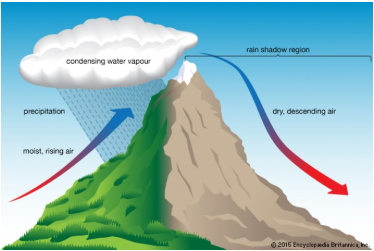
[block_token:iagua_custom_options:adsense_within_node]
- Frontal (cyclonic) precipitation: they are typical of temperate latitudes and occur when a front or boundary zone is formed between air masses with different temperatures and humidity without mixing with each other. Three kinds of weather fronts may form:
- Cold front: when a cool air mass moves and encounters a warm air mass in its path, moves underneath it and forces the warm air mass to rise. It condenses forming cumulonimbus and stormy precipitation.

Source: Climate & Weather
- Warm front: when the warm air mass moves over the cold air mass and produces horizontal clouds (stratus), causing persistent rainfall.

Source: Climate & Weather
- Occluded front: it forms where a slower moving warm front is followed by a faster moving cold front. Due to the irregularities in the contact surface and the friction between both masses, it tends to curve and form undulations where the cold air is deflected in a southerly direction and the warm air in a northerly direction.
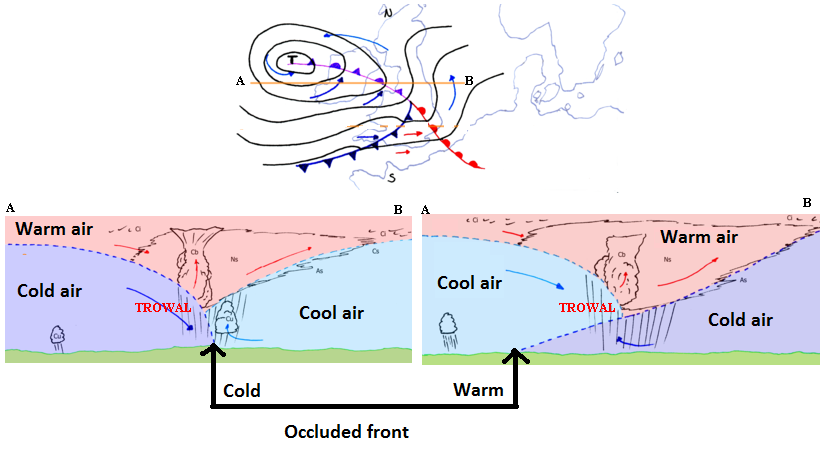
Source: By Front_occlus_trowal.png: Pierre_cbderivative work: Pierre cb - This file was derived from: Front occlus trowal.png:, Public Domain, https://commons.wikimedia.org/w/index.php?curid=27925717





